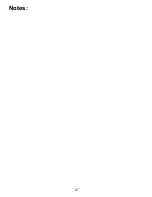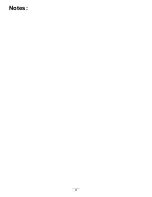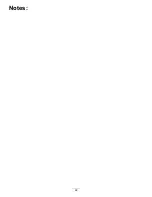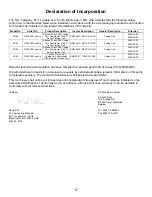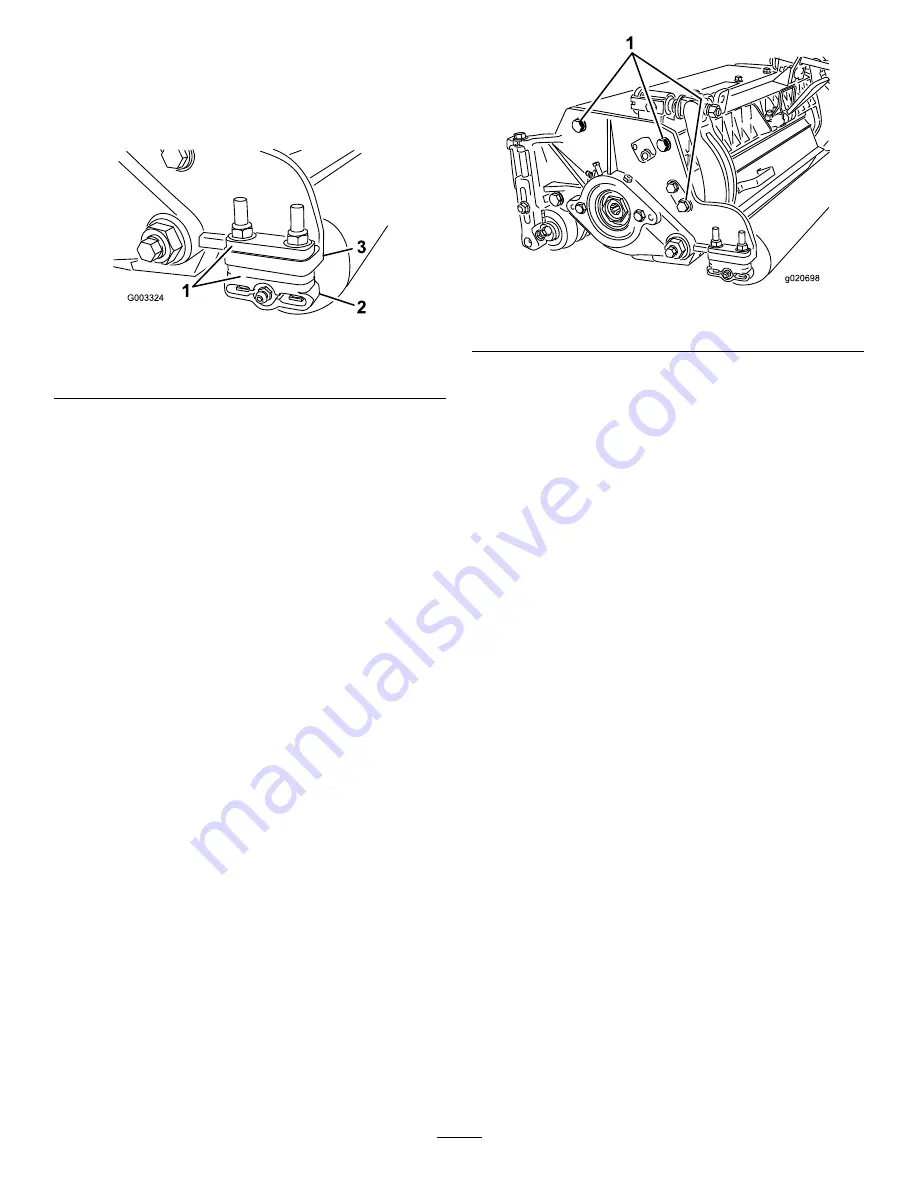
Adjusting the Rear Roller
1.
Adjust the rear roller brackets (Figure 14) to the desired
height of cut range by positioning the required amount
of spacers below the side plate mounting flange (Figure
14) per the HOC Chart.
Figure 14
1.
Spacer
3.
Side plate mounting flange
2.
Roller bracket
2.
Raise rear of cutting unit and place a block under
bedknife.
3.
Remove (2) nuts securing each roller bracket and spacer
to each side plate mounting flange.
4.
Lower roller and screws from side plate mounting
flanges and spacers.
5.
Place spacers onto screws on roller brackets.
6.
Re-secure roller bracket and spacers to underside
of side plate mounting flanges with nuts previously
removed.
7.
Verify that bedknife to reel contact is correct. Tip
mower to expose front and rear rollers and bedknife.
Note:
The position of the rear roller to the reel
is controlled by the machining tolerances of the
assembled components and paralleling is not required.
A limited amount of adjustment is possible by setting
the cutting unit on a surface plate and loosening the
side plate mounting cap screws (Figure 15). Adjust and
retighten cap screws. Torque the cap screws to 37-45
N-m (27-33 ft-lb).
g020698
Figure 15
1.
Side plate mounting cap screws
Height of Cut Chart Terms
Height of Cut Setting (HOC)
The desired Height of Cut.
Bench Set Height of Cut
The height at which the top edge of the bedknife is set above
a flat level surface that contacts the bottom of both the front
and rear roller.
Effective Height of Cut
This is the actual height the grass has been cut. For a given
bench set height of cut, the actual height of cut will vary
depending on the type of grass, time of year, turf and soil
conditions. The cutting unit set up (aggressiveness of cut,
rollers, bedknives, attachments installed, turf compensation
settings, etc.) will also affect the effective height of cut. Check
the effective height of cut using the Turf Evaluator, Model
04399 regularly to determine the desired bench set height
of cut.
Aggressiveness of Cut
Cutting unit Aggressiveness of Cut has a significant impact
on the performance of the cutting unit. Aggressiveness of
Cut refers to the angle of the bedknife relative to the ground
(Figure 16).
The best cutting unit setup is dependent on your turf
conditions and desired results. Experience with the cutting
unit on your turf will determine the best setting to use.
Aggressiveness of cut may be adjusted throughout the cutting
season to allow for various turf conditions.
In general, less to normal aggressive settings are more
appropriate for warm season grasses (Bermuda, Paspalum,
Zoysia) while cool season grasses (Bent, Bluegrass, Rye) may
require normal to more aggressive setups. More aggressive
10




















